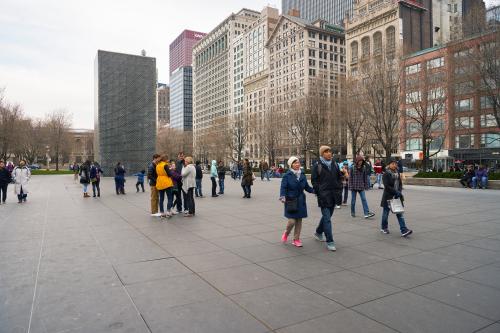The election of George W. Bush in 2000 seemed to have crowned Texas the nation’s political winner, among states, as the “Aughts” decade began. When results from the 2010 Census are tallied, the Lone Star state will surely turn out to be the demographic winner for the decade as well.
The Census Bureau all but confirmed Texas’ ascendance this week with the release of population estimates for cities through 2009. These estimates, the last before the actual 2010 headcount gets reported in December, confirm trends seen in previous 2009 estimates for states, metropolitan areas and counties. Those earlier estimates not only showed that Texas is likely to gain 4 congressional seats through reapportionment, but also highlighted the abrupt slowdown in late-decade population gains in Sunbelt states (especially Florida) and metropolitan areas (like Phoenix and Las Vegas). The latter areas suffered from the migration slowdown associated with the bursting of the housing bubble and the ensuing Great Recession.
The new numbers for cities emphasize Texas’ strength relative to the rest of the Sunbelt. From 2005 to 2009, Houston led all U.S. cities with a population gain of 182,000, and three other Texas cities—San Antonio, Forth Worth and Austin—ranked among the top six gainers. The Lone Star city surge was especially pronounced from 2008 to 2009. During that year, five Texas cities, including Dallas, ranked among the top nine in numeric gains, and five—led by Frisco, TX in suburban Dallas—ranked among the top 11 in growth rates. This late decade surge will more than likely make Texas cities the big winners when decade-long trends are tallied with the 2010 Census, with Houston ranking second in gains after New York.
##1##
The Texas city gains reflect the steady performance of the state’s urban economies. In contrast to other parts of the Sunbelt, Texas metro areas witnessed a less rapid run-up in house prices during the early part of the Aughts, and were thus relatively insulated from the housing downturn and the worst impacts of the Great Recession. Large Texas metro areas continue to perform favorably on a range of employment and housing indicators.
In stark contrast, Florida’s cities continue to take a hit. Two of Florida’s 19 cities with populations over 100,000—Cape Coral and St. Petersburg—lost population in 2008–2009. Ten of the 19 grew more slowly than in the previous year, and 15 grew more slowly than at the peak of the boom in 2004–2005. Poster child Port St. Lucie grew a mere 0.5 percent in 2008–2009 compared with 12 percent in 2004–2005. And Cape Coral’s population decline was sixth fastest among big cities, placing it in the rare vicinity of Buffalo and Dayton.
##2##
Sharp drops from growth peaks earlier in the decade were evident in cities outside of Florida, including larger ones like Phoenix, Atlanta, Raleigh, and Bakersfield, as well as suburban cities like Henderson, Nevada. Still, actual numeric losses since the decade began are largest in Northeastern and Midwestern cities. With the exception of New Orleans which lost 130,000 residents since 2000 (despite recouping a majority of its Katrina-related losses), populations in Cleveland, Chicago, and Detroit dropped by more than 40,000, and by more than 20,000 in Pittsburgh and Buffalo.
The other casualty of the housing bust was growth of the suburbs. In the nation’s 52 metropolitan areas with populations over 1 million, suburban growth slowed in more than half (27) in 2008–2009, and 33 experienced slower suburban growth than in 2004–2005. While such slowdowns occurred in all parts of the country, they were especially pronounced outside of Sunbelt cities such as Phoenix, Las Vegas, Raleigh, Atlanta, Nashville, and Orlando.
##3##
Moreover, the growth rate differential between suburbs and cities narrowed considerably over the latter half of the decade (1.1 percent versus 1.0 percent in 2008–2009, compared with 1.3 percent versus 0.6 percent in 2004–2005), continuing a pattern identified in our recent State of Metropolitan America report. Of the 34 cities with populations exceeding one million, 19—including New York, Los Angeles, and Chicago—grew faster in 2008–2009 than the year before, and 23 grew faster than at mid-decade when many migrants were following the boom to suburbs, exurbs, and smaller places. Chicago, Dallas, Denver, Seattle, and Washington D.C. each exhibited their fastest growth of the decade in the past year.
As the decade closes, Texas cities are looking good and many large older cities are holding their own. Of course, the 2010 census may yet hold some surprises, as was the case in 2000 when the Census Bureau counted more than 6 million “unexpected” people. If this count again uncovers larger-than-expected numbers of Hispanics and city dwellers, everything may indeed be bigger in Texas.



Commentary
Op-edTexas Gains, Suburbs Lose in 2010 Census Preview
June 25, 2010